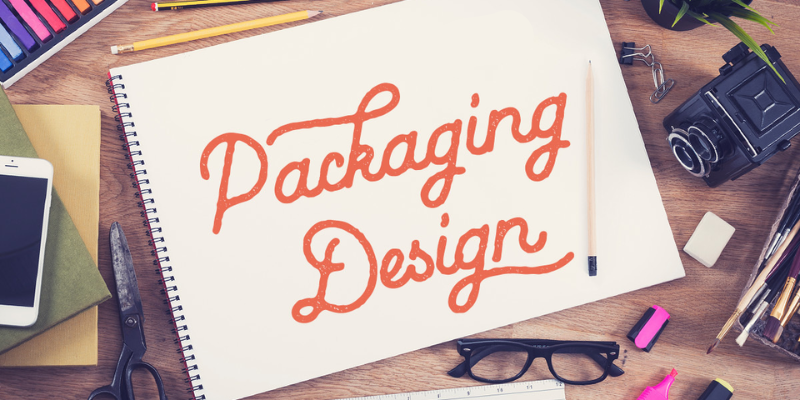Packaging design plays a crucial role in the success of a product. It’s the first thing a customer sees, and it helps form an impression of the brand. Whether you’re designing for a food item, beauty product, or tech gadget, great packaging design not only protects the product but also boosts sales, communicates the brand message, and engages consumers. In this blog, we will walk you through the process of creating stunning packaging designs that catch the eye and leave a lasting impact. If you’re interested in learning how to create such designs, consider enrolling in Graphic Design Courses in Chennai to enhance your skills.
The Importance of Packaging Design
Packaging design is more than just about looks—it’s a powerful marketing tool. The design of your packaging can influence purchasing decisions, convey the brand’s values, and create a sense of trust with your customers. It’s essential for distinguishing your product from competitors and ensuring that it stands out on crowded retail shelves. As brands increasingly compete for attention, eye-catching packaging design has become a vital strategy for business growth.
Understand Your Brand and Product
Before starting your packaging design, it’s vital to have a clear understanding of the product you’re designing for and the brand it represents. Ask yourself:
- What is the nature of the product?
- What values does the brand promote?
- Who is your target audience?
The design should reflect the product’s purpose and communicate the brand’s identity clearly. For example, a luxurious perfume would likely have sleek, elegant packaging, while a fun, organic snack brand might go for bright colors and playful design elements. Defining your brand’s personality before beginning the design process helps guide your decisions when selecting colors, fonts, and other design elements. To further enhance your design skills, consider taking a Graphic Design Online Course to learn more about these key design principles.
Research and Inspiration
Once you understand your brand and product, the next step is to research existing packaging designs. Browse packaging portfolios, attend design exhibitions, and look for inspiration in nature, architecture, or art. This will help you understand current trends in packaging and identify what appeals to your target audience. While inspiration is important, remember that originality is key. Your design needs to be unique and should differentiate your product from others on the market.
Focus on Functionality
Packaging isn’t just about looking good—it must also be functional. Ensure that the design is practical for the type of product you’re selling. The packaging should protect the product from damage during shipping, preserve its freshness (if applicable), and be easy for customers to open and use. For example, food packaging often needs to be sealed securely and be easy to tear open, while cosmetic packaging may require a luxurious feel and airtight design.
Consider how the customer will interact with your product packaging from the moment they purchase it to when they start using the product. A well-designed package will enhance the customer experience by offering ease of use and promoting convenience. If you’re interested in creating such seamless experiences, a Web Designing Course can help you understand how to design user-friendly interfaces for digital platforms.
Use Colors Wisely
Color plays a significant role in packaging design. It can evoke emotions, convey a brand’s personality, and attract attention. For example, bold colors like red and yellow are often used for energy drinks and fast food, while softer, muted tones are common for organic products and luxury goods. When choosing colors for your packaging, consider your target audience’s preferences and your brand’s identity.
Also, think about how the colors will look in different lighting or on store shelves. Your design should stand out and be visible among competing products. Ensure that the color palette you choose works well with the overall aesthetic and does not overwhelm the design.
Typography and Imagery
Typography is an important element of packaging design. The fonts you choose need to align with your brand’s personality while ensuring readability. For example, a vintage product may use classic serif fonts, while a tech product may incorporate modern, clean sans-serif fonts.
Similarly, imagery plays a key role in setting the tone of the packaging. Whether you choose illustrations, photographs, or graphics, they should be carefully considered to enhance the product’s appeal and communicate its value. Images should be high-quality and resonate with your target audience. They should complement the design rather than clutter it. For those looking to enhance their skills in a different field, Full Stack Developer Online Training offers in-depth knowledge for a career in web development.
Sustainability Matters
Sustainability is increasingly becoming a priority for consumers and businesses alike. Packaging that is eco-friendly can not only help reduce environmental impact but also improve your brand image. Many consumers now prefer to purchase from companies that prioritize sustainable practices. Consider using recyclable materials, biodegradable packaging, or innovative eco-friendly alternatives in your designs. Not only will this help your brand stand out as environmentally conscious, but it may also appeal to a growing base of eco-aware customers.
Also Check: How to Kickstart Your Journey in 3D Graphic Design?
Keep It Simple Yet Impactful
Sometimes less is more when it comes to packaging design. A minimalist approach can often make a bigger statement than a cluttered or overly complex design. Focus on clear, bold graphics and simple typography that conveys your brand’s message effectively. A clean, simple design allows your product to speak for itself, while the packaging still makes a powerful visual impact.
Test and Iterate
Once you have your initial design concepts, it’s important to test them. Conduct focus groups or surveys with your target audience to gather feedback. How does the design resonate with them? Does it reflect the brand values? Testing the packaging on real-world consumers will help you refine the design, ensuring that it has the desired effect when it hits the market. If you’re also looking to enhance your skills, consider enrolling in the Best Training Institute in Chennai for professional development in various fields.
Creating stunning packaging designs is an essential skill for graphic designers, and it requires both creativity and strategic thinking. By understanding your product and brand, researching trends, ensuring functionality, and focusing on the customer experience, you can create packaging that not only looks great but also enhances the product’s value. A well-designed package will grab attention, build trust, and differentiate your product from the competition. Remember, effective packaging design is about balance—combine creativity with functionality to leave a lasting impression on consumers.
Also Read: 10 Reasons Why Tally is Essential for Business Owners


